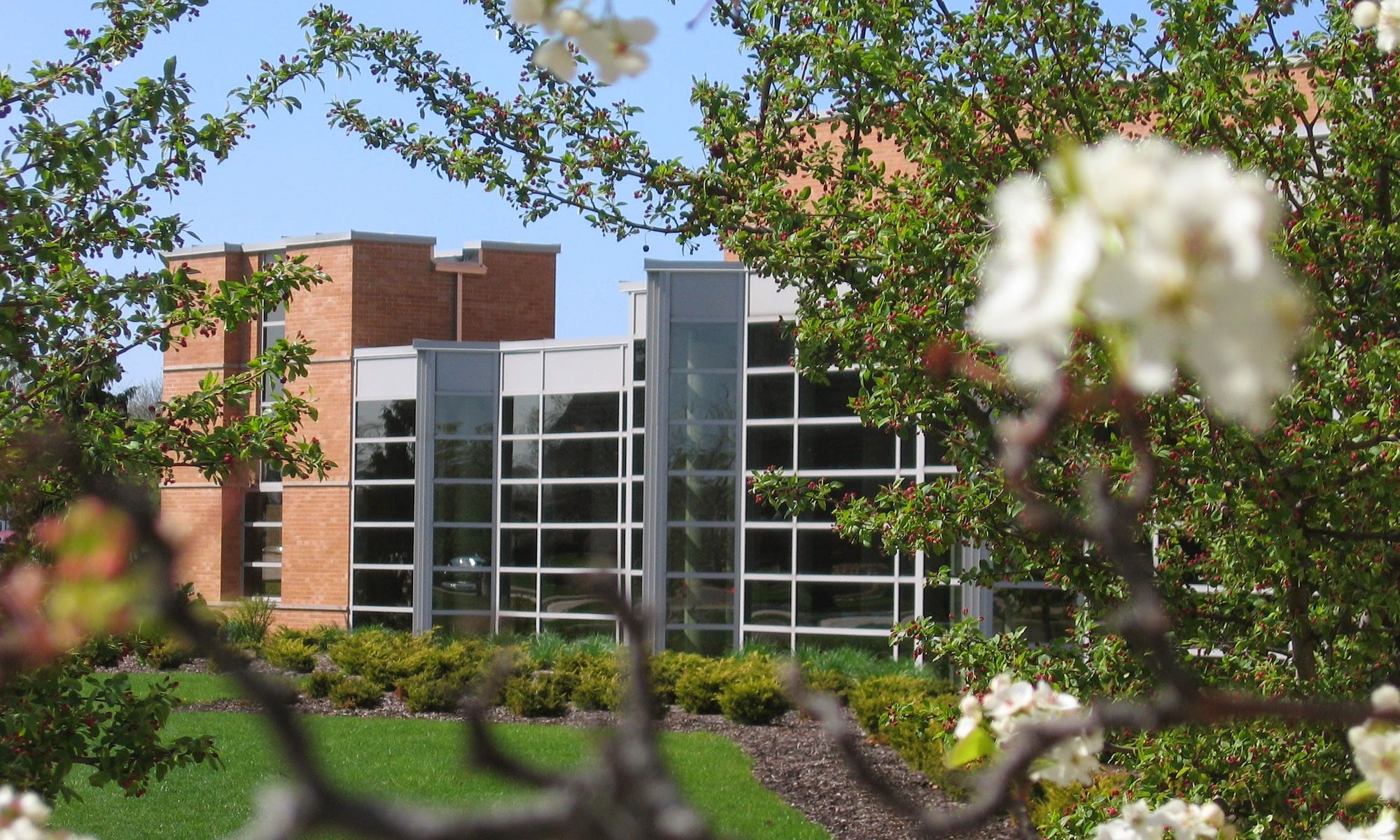The Valparaiso University Center for the Arts, which houses the Brauer Museum of Art Photo by Runner1928, via Wikimedia Commons
On Wednesday (28 August), Richard Brauer, the 97-year-old founding director of the art museum at Valparaiso University in Indiana and after whom it subsequently was renamed, ended his legal efforts to stop the university from selling several valuable works from the museum’s collection in order to pay for other university needs.
The three paintings—Georgia O’Keeffe’s Rust Red Hills (1930), Frederic E. Church’s Mountain Landscape (1865) and Childe Hassam’s The Silver Veil and the Golden Gate (1914)—have been estimated to be worth a combined $10m to $15m, and the money generated from their sale is to be used to improve freshmen dormitories with “amenities and features that prospective students value and expect”, according to a statement by the university’s president, Jose D. Padilla, in February 2023 when the deaccessioning was first announced. A spokesperson for the university had not responded to The Art Newspaper’s request for comment as of press time.
In a statement released by his lawyer, Patrick McEuen, Brauer, who served as director of the university’s Brauer Museum of Art from 1961 to 1997, called the withdrawal of his lawsuit “a very difficult decision. The University was threatening me, and my attorney, who was representing me pro bono, with sanctions if the court rejected my petition to intervene. The thought of that fight made me sick to my stomach. A 97-year-old man, and the attorney working for free, facing untold thousands of dollars in sanctions and fines? It was not a position I could afford to be in. I did not want my heir paying fines to Valparaiso University over my decision to try and save the museum which bears my name.”
Frederic E. Church, Mountain Landscape, around 1849, Brauer Museum of Art at Valparaiso University Via Wikimedia Commons
The 17-month-long effort to stop the university’s plan to sell the artworks won allies, including several industry groups—such as the Association of Art Museum Directors, American Alliance of Museums, the Association of Academic Museums and Galleries and the Association of Art Museum Curators—as well as members of the university faculty and student bodies. But the effort lost in court: a civil suit to stop the proposed sale filed by Brauer and various supporters of the museum was dismissed last autumn for lack of standing by the complainants and was rejected by Indiana Attorney General Scott Rokita.
There are plenty of precedents for Valparaiso University’s actions. In autumn 2006, Rockford College in Rockford, Illinois sold around 2,000 works—including several woodblock prints by Japanese artist Ando Hiroshige, an etching by Francisco de Goya and a variety of ancient Egyptian and Roman antiquities—at Leslie Hindman Auctioneers in Chicago, netting $1.1m. The sale was so successful that the college later offered works from its rare book collection, earning more than $100,000 at Leslie Hindman in spring 2007.
Also in 2006, both Randolph-Macon Woman’s College in Lynchburg, Virginia, and Fisk University in Nashville, Tennessee, sought to fill holes in their budgets by selling at auction works from their museum collections: George Bellows’s Men of the Docks (1912), Edward Hicks’s A Peaceable Kingdom (around 1840-45), Ernest Martin Hennings’s undated Through the Arroyo and Rufino Tamayo’s Troubador (1945) at Randolph-Macon; and Marsden Hartley’s Painting No. 3 (1913) and O’Keeffe’s Radiator Building (1927) at Fisk. In both instances, the Crystal Bridges Museum of American Art purchased the works.
Childe Hassam, The Silver Veil and the Golden Gate, 1914, Brauer Museum of Art at Valparaiso University Via Wikimedia Commons
Brandeis University’s Rose Art Museum came close to extinction in 2009, when the university’s financial distress led to a plan to sell the museum’s entire 7,100-piece collection, but that was halted. That same year, the National Academy Museum in New York City, which had been dipping into its $10m endowment to pay operating expenses, considered selling its building but then opted to put on the market several prized works from its collection, including Church’s 1854 Scene on the Magdalene and Sanford Robinson Gifford’s 1859 Mount Mansfield, Vermont, which earned the institution $13.5m. Each of these deaccessioning plans elicited opposition, but all of them save Brandeis University’s ultimately went ahead.
“I hope Mr Brauer’s steadfast opposition to the sale of precious artworks inspires others to protect their collections as he has done his very best to protect ours,” says John Ruff, a senior research professor in the English department at Valparaiso. “That’s the precedent I’m hoping for.”
McEuen, Brauer’s lawyer, would not comment on the end of his legal efforts to stop the sale, but referred to the expected sale as “a heartbreaking auction”.

